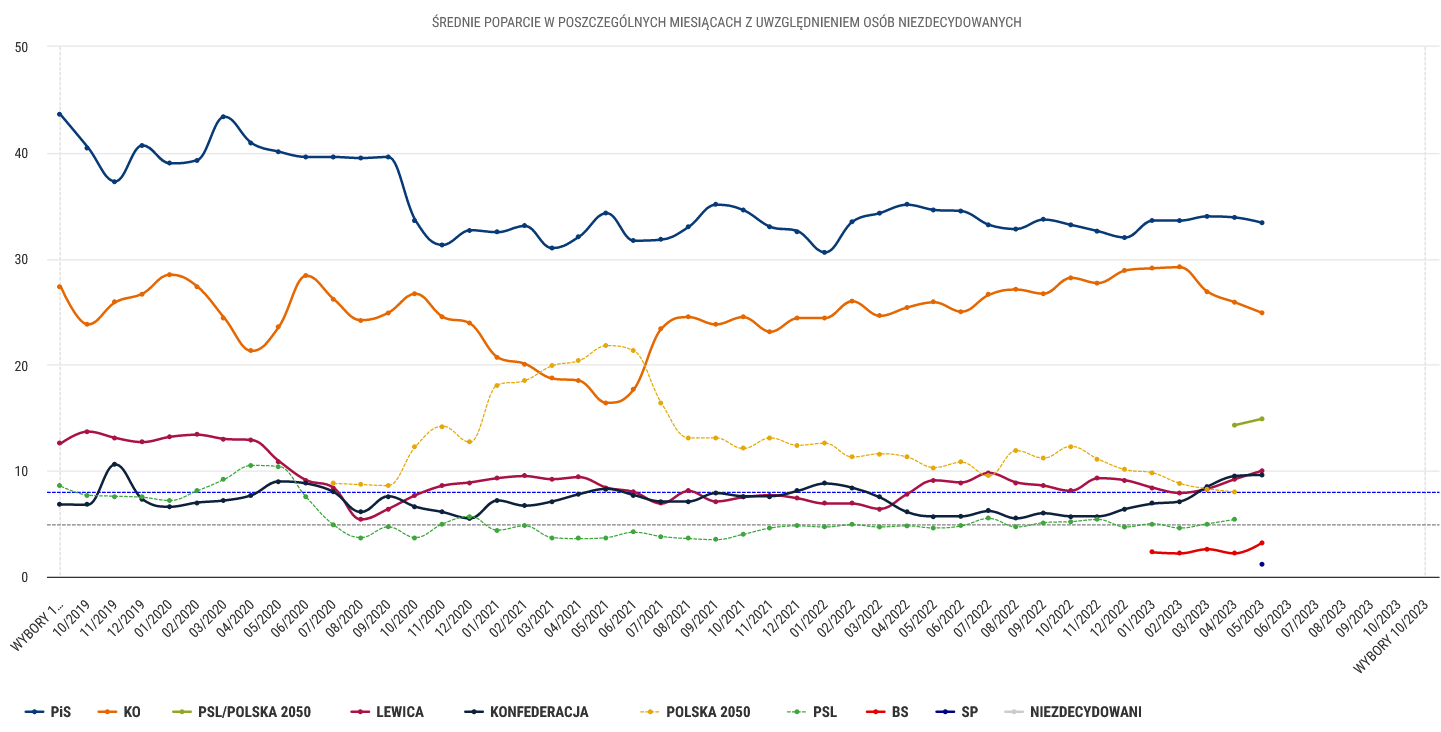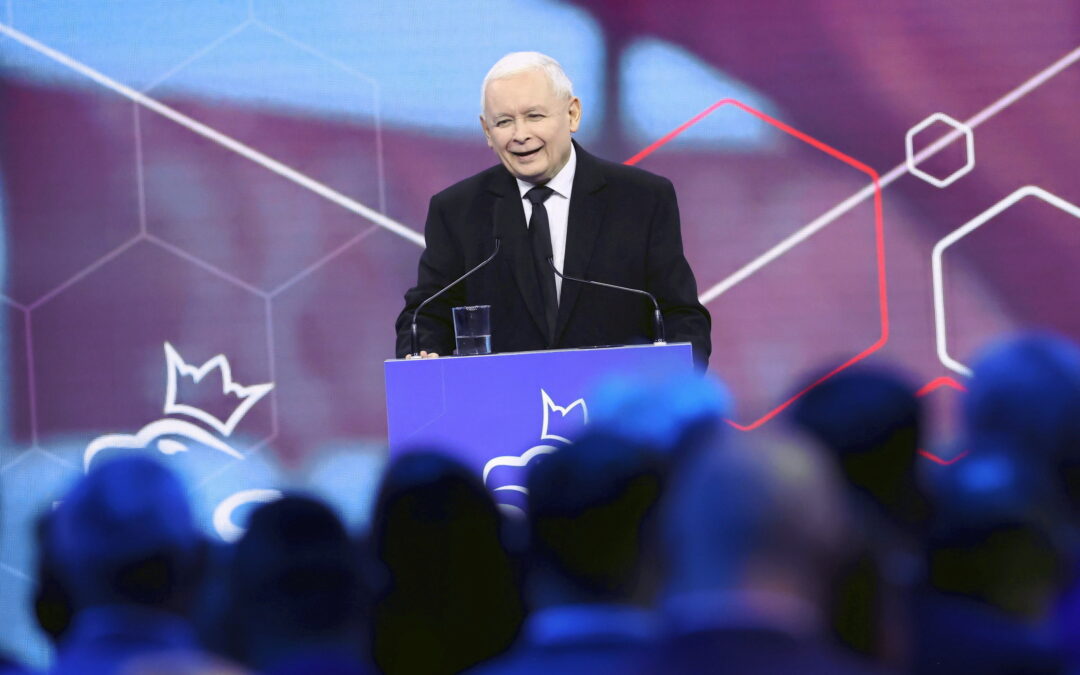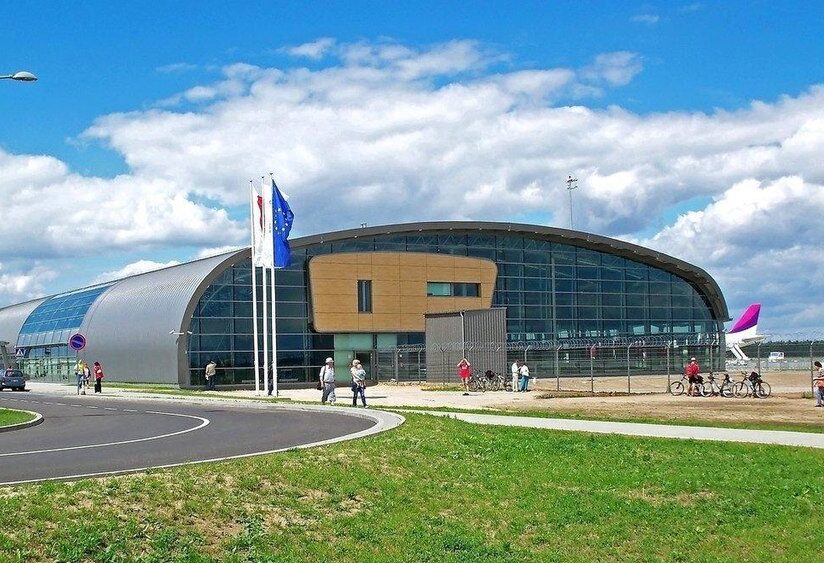Poland’s ruling Law and Justice (PiS) party has announced that its flagship child-benefit programme – the promise of which helped it come to power in 2015 – will be increased next year for the first time. It is currently campaigning to win a third term at this autumn’s elections.
The payments – known as “500+” because they provide 500 zloty (€110) per child per month – will be increased to 800 zloty (€177), declared PiS chairman Jarosław Kaczyński. He also unveiled pledges to provide free medicine for children and seniors and to end tolls for using motorways.
Prezes #PiS J. #Kaczyński przedstawił #NoweKonkretyPiS ⤵
👉 #800Plus od stycznia 2024 r. 👨👩👧👦
👉 Darmowe leki od 65. roku życia oraz dla dzieci i młodzieży do 18. roku życia 💊
👉 Darmowe autostrady państwowe dla samochodów osobowych 🛣#KonwencjaPiS #ProgramowyUL 🐝🇵🇱 pic.twitter.com/Z1TcZfGA12— Prawo i Sprawiedliwość (@pisorgpl) May 14, 2023
“We are continuing and developing the social sphere,” said Kaczyński during a speech at the end of a two-day PiS convention in Warsaw. “From the new year, 500+ will be a name still remembered, but the amount will be different – 800+.”
It is the first time the size of the benefit has been increased since it was introduced in 2016. Initially, the scheme covered each family’s second and subsequent children, but from 2019 it was expanded to also include the first child. There is no income or wealth threshold for parents to qualify for the benefit.
The programme has been extremely popular, and is seen as an important factor in reducing child poverty. However, it has not resulted – as PiS hoped – in a rise in the birth rate, which has continued to fall and is among Europe’s lowest.
The number of births in Poland last year was the lowest since WWII while the number of deaths was higher than at any time other than in 2020 and 2021.
It was the tenth year in a row in which deaths have outnumbered births https://t.co/MiCTyAPH1z
— Notes from Poland 🇵🇱 (@notesfrompoland) January 31, 2023
Over the last two years, the value of the payouts has diminished significantly amid inflation that reached over 18%. By January this year, their “real value” compared to when the programme was first introduced had fallen to below 350 zloty, calculates Business Insider Polska.
Raising the benefits now to 800 zloty will increase the annual cost of the programme from 40 billion currently to between 62 and 66 billion zloty, note experts. Some commentators, as well as Stanisław Tyszka, an MP from the far-right Confederation (Konfederacja) party, warned that this would further stoke inflation.
Kaczyński, however, said that PiS has “taken [such considerations] into account…We hope that in the new year inflation will be low, so this new financial injection will no longer threaten a return to inflationary tendencies”.
The rising cost of living has led 17% of Poles to find additional employment, a study has found
Most Poles (70%) say that their financial situation has deteriorated over the last year, during which inflation has risen to over 18% https://t.co/QujkpgyMem
— Notes from Poland 🇵🇱 (@notesfrompoland) March 24, 2023
Kaczyński also outlined plans to end tolls on state-run motorways for private cars “as quickly as possible” and said that this would be followed by privately run roads sometime next year.
Those policies, in addition to free medicines for people aged up to 18 and over 65, will “require some legal and budgetary solutions, but I think it can be said that the new year will be the beginning of a new situation”, said the PiS chairman, who holds no formal position in government but is seen as Poland’s de facto leader.
However, an opposition politician, Marek Sawicki of the Polish People’s Party (PSL), asked “where [Kaczyński] intends to get the money” to cover these new costs. He noted that, as a result of the government’s rule-of-law conflict with the EU, Poland is still paying daily fines and has seen billions in pandemic recovery funds frozen.
“If PiS decides to implement this program, it means that they will again have to reach deep into the wallets of those who work hard and run a business,” said Sawicki, quoted by financial news website Bankier.pl.
Opposition leader Tusk says the ruling PiS party is supported by – and shares a similar mentality with – unemployed men who drink and beat women and children
The remarks – now deleted from his party's social media – show "how he perceives Poles", says PiS https://t.co/rvakXlIxgz
— Notes from Poland 🇵🇱 (@notesfrompoland) May 12, 2023
During his speech, Kaczyński also called for further measures to encourage foreign investment in Poland and for further strengthening of the country’s military.
“We want to continue on the path of rapid development, catching up with Western countries, achieving prosperity obtained by these countries,” said Kaczyński. “First, we want to catch up with countries such as Spain, then Italy and France.”
Last year, EU data showed that Poland has overtaken Portugal in terms of GDP per capita taking account of price differences (purchasing power standards). It remains slightly behind Spain.
Poland is no longer a low-wage country, says ruling party leader Jarosław Kaczyński, who points to @OECD data showing that Polish average earnings are just behind Japan's https://t.co/b5dZh691Gb
— Notes from Poland 🇵🇱 (@notesfrompoland) November 13, 2022
PiS is seeking to win an unprecedented third term in power at this autumn’s elections. It is currently leading the polls with support of around 34%. That figure, however, would probably not be enough to win it a majority in parliament.
That could open the way for an opposition coalition of centrist and left-wing parties to take power: Civic Platform, which is polling around 25%; the alliance of Poland 2050 (Polska 2050) and PSL, who have support of 15%; and The Left (Lewica) on 10%.
However, it is possible that neither side would be able to form a majority without the support of the nationalist Confederation, which is polling around 9%.

Monthly polling averages for Poland’s main political groups (via ewybory.eu)
Main image credit: Kuba Atys / Agencja Wyborcza.pl

Daniel Tilles is editor-in-chief of Notes from Poland. He has written on Polish affairs for a wide range of publications, including Foreign Policy, POLITICO Europe, EUobserver and Dziennik Gazeta Prawna.




















